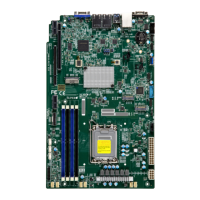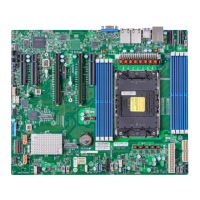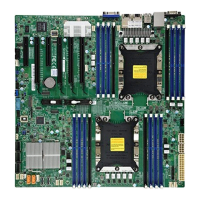18
Super X13SCW-F User's Manual
1.2 Processor and Chipset Overview
Built upon the functionality and capability of the Intel Xeon E-2400 or 12th Generation Pentium
processor (V0 - (LGA1700), and the Intel C266 chipset, the X13SCW-F motherboard provides
optimized system performance, ecient power management, and features based on cutting
edge technology to address the needs of next-generation computer users.
The X13SCW-F oers maximum I/O exibility and data reliability in an Intel 7 process
technology and is ideal for network appliance, telecommuting, and media-transcoding.
The Intel Xeon E-2400 or 12th Generation Pentium processor, and the Intel C266 chipset
support the following features:
• DDR5 288-pin memory support
• Intel Hyper-Threading, Intel VT-D, VT-x
• Intel SGX
• Intel Turbo Boost Technology
• SPI Enhancements
• Intel Node Manager, which provides a suite of tools to control and monitor power, thermal,
and resource usage
• BMC supports remote management, virtualization, and the security package for enterprise
platforms
1.3 Special Features
Recovery from AC Power Loss
The Basic I/O System (BIOS) provides a setting that determines how the system will respond
when AC power is lost and then restored to the system. You can choose for the system to
remain powered o (in which case you must press the power switch to turn it back on), or
for it to automatically return to the power-on state. See the Advanced BIOS Setup section
for this setting. The default setting is Last State.

